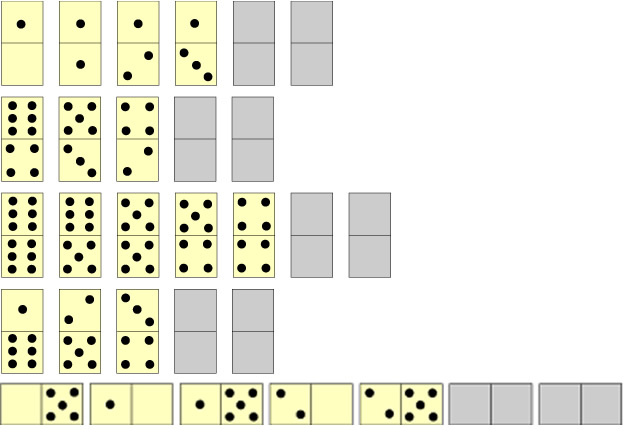Copyright © University of Cambridge. All rights reserved.
'Domino Sequences' printed from https://nrich.maths.org/
Show menu
Why do this problem?
This problem introduces number sequences in a simple way using a familiar resource. The sequences become increasingly complex so that there is also a challenge for learners.
Possible approach
This problem featured in the NRICH Primary webinar in June 2022 alongside Missing Middles.
Ideally, children should be familiar with dominoes through free-play and domino games before attempting more formal tasks such as pattern building.
Look at the first sequence together, perhaps using giant dominoes on the floor, or some on the interactive whiteboard (you might find our Dominoes Environment useful). Ask children to talk in pairs about what they notice and then share ideas with the whole group. Then invite them to suggest how the pattern could be continued, focusing on their explanations and justifications.
Key questions
What do you notice about the numbers at the top of the dominoes? What will the next one be?
What do you notice about the numbers at the bottom of the dominoes? What will the next one be?
Can you explain the pattern?
Possible support
Having a number line or number square available to mark off numbers might help children identify a pattern. There are some more similar domino sequences in Next Domino.
Possible extension
Handouts for teachers are available here (Word document, pdf), with the problem on one side and the notes on the other.
